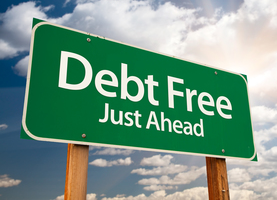by Ashley
Amazon Prime Days (October 8-9) are upon us! Historically, I haven’t looked at these sales with much enthusiasm. I’ve come across reports suggesting that Amazon sometimes inflates prices prior to Prime Days, creating an artificial “price cut” when items are really just returning to their original price. This makes shopping feel deceptive and frustrating. Additionally, I personally hate being inundated with ads by influencers and the like all across social media. The entire buying frenzy culture just isn’t appealing to me.
However, I recently stumbled upon a tip that could help folks (actually) save money during Amazon Prime Days without falling into the trap of acquiring unnecessary clutter.
Saving Money with Prime

Start in the Amazon app or website, and go to your profile. From there, select the “Buy Again” option. This feature displays items you’ve previously purchased. From there, you can browse through to see if there’s anything from the list you need again that is now suddenly on sale for Prime Days. For instance, I noticed discounts on several of my dogs’ essentials, including training treats, dental chews, and probiotic supplements. For me, I also found great deals on my favorite face masks, makeup remover wipes, and plain white socks—things I regularly use and replenish.
By focusing on items you genuinely buy anyway, you can take advantage of the sales without getting caught up in the hype. Regarding the issue of inflated prices (causing “sales” prices to just be the regular price), you can check that too! You can click on an item you bought in your order history and see what you paid for it in the past. This will help you determine if the great “sales” price is really a deal. And it’s a good idea to know, in general, what you pay for common products anyway.
Knowledge is Power
When I first started my debt-reduction journey blogging here (almost 10 years ago!), I used to keep a price list of all my normal grocery items. That helped me to identify when there were really great sales on common items and to stock up when items were on sale versus at their everyday price. This helped me save a lot on groceries, particularly on meat products, because I’d only buy items that were on sale. I then learned to create meal plans based on the foods in my freezer. My norm prior to starting my debt-reduction journey was to create a meal plan, then buy those ingredients for the week. Reversing things – only buying sales items and then planning meals around the foods you have on-hand – really changed up my grocery game and helped me save a lot from my grocery budget.
In general, I think this principle is good to keep in mind for any type of replenish able products you regularly buy – whether at the grocery store, through Amazon, or any other retailer. Having a good idea of a product’s typical price will help you to know when a price cut really is a great deal versus when it’s just hype.
So, if you’re planning to shop during Prime Days, remember to check your past purchases first. This way, you can make informed decisions and ensure you’re getting the most bang for your buck!

Hi, I’m Ashley! Arizonan on paper, Texan at heart. Lover of running, blogging, and all things cheeeeese. Freshly 40, married mother of two, working in academia. Trying to finally (finally!) pay off that ridiculous 6-digit student loan debt!


This is really great and practical advice! I did something similar today. Basically spent an hour searching for stuff I normally buy and checked to see if it was cheap. I found massive savings for my dishwasher pods, some hygiene items, and for an iPad that my child broke at someone else’s house last week. iPads barely ever go on sale and this was the exact same model of the broken one for almost 30% off – thank God lol. My daughter is 16 months old and simply walked by a shelf and wobbled into it in order to break this so it sucks to replace but I know it’s the right thing to do and am grateful for the sale!
That’s lucky that the sale was for the same exact iPad that was broken!